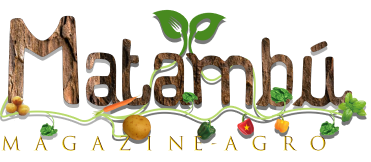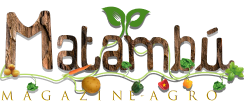(Matambú Magazine-Agro)_Cassava starch, a high-potential market that promises to be lucrative for interested, savvy agro-entrepreneurs. In perspective, it is more income to be generated in the sector, in the next 5 to 8 years, from now.
Cassava is known as one of the basic and crucial components in the agro-industrial processing sector. And its starch specifically, is used in numerous other applications. This native or modified tuber derivative is used by many manufacturing businesses worldwide as a component in the processing of their food and non-food products.
According to a Fortune Business Insights report on the “Cassava Starch Market Size” that was released in June 2022, demand for cassava starch to produce food products is expected to rise in the coming years due, among other things, the rising prevalence of gluten intolerance among consumers.
In numbers, the report’s forecasts place the derivatives market at 66.84 billion USD by 2026, up from 40.53 billion USD in 2018, or a 65% increase.
IMARC GROUP, a global business and market research company, also reports the rise in the starch market. The Group claims that worldwide production of the cassava derivative would reach 4.07 billion tons in 2021 and will likely rise by 6.2% over the next five to six years.
Regarding the market as a whole
As with most consumer goods, the pandemic has affected the trade in cassava starch, which must involve the tuber itself first. The coro-viral crisis has imposed restrictions that have had an impact on supply chains and the global market. If the coronavirus continues to spread, the situation could only get worse.
The starch market was also significantly affected by the scarcity of certain products and the rising costs of raw materials.
According to Ndidi Nwuneli, co-founder of Sahel Consulting Agriculture and Nutrition, in an interview, production of the tuber derivative has increased in Nigeria, for instance.
In the same nation, Psaltry International Ldt. CEO Yemisi Iranloye, was quoted in a media as saying that they “receive more and more orders from their buyers, due to a lack of wheat,” despite being one of the major players in the production of cassava starch.
However, one of the primary drivers of the cassava starch market, according to our first source, is the rising number of consumers seeking gluten-free food products.
An observation in the trends demonstrates that today’s active populations adopt a different lifestyle due to their occupations or activities. This has an impact on their consumption patterns and leaves room for an increase in the demand for ready-to-eat food products. Many of these instant foods are made from the cassava starch.
Regarding the products,
forecasts indicate that among the derivatives, the sweetener made from the well-known gluten-free starch will be in high demand due to its natural properties as ‘’ antioxidants ‘’, and due also to its use as a natural ingredient in the production of numerous food and beverage products. Importantly, the textile, pharmaceutical, and packaging product industries all make use of cassava starch as a raw material.
Cassava starch Producers
Cassava starch market has a number of players of varying calibers, all of which contribute to the fierce competition. We have, for instance, businesses like:
- Ingredion
- Cargill Inc.
- AGRANA Starch
- The Dutch Agricultural Development & Trading Company B.V.
- Visco Starch
- Vaighai Agro
- Psaltry International Ltd.
- Sunrise International
- PT Buda Starch & Sweetener
- Aryan International, and many others who are prominent players on the scene and who, based on forecasts, have the potential to propel the entire industry and, as a result, significantly affect the agro-industrial sector.
According to a study of the referred product industry, Asian countries dominate the international market for cassava starch, both in terms of import and export. The study reveals that in 2016, massive imports of the by-product were recorded 2.07 million tons for China, and 630,000 tons for Indonesia, which is on the list of many countries with large volumes of imports of starch around the world.
However, conversely, the most populous continent also leads the world in exports of the tuber derivative, with supplier countries such as Thailand, Vietnam, and others, as can be seen in the table below:
Value in USD of exports from some of the major cassava starch exporting countries between 2013-2020
Countries…………….Average Value of exports……………… World Export Rate
Thailand…………… 1 182 Millions…………………………………………… 52.65 %
Vietnam………….. 797.50 Millions ……………………………………….. 39.95 %
Laos………………… 17.75 Millions …………………………………………. 1.94 %
Indonesia………… 12.69 Millions ………………………………………….. 1.41 %
Thailand and Vietnam respectively shipped nearly 3.07 million tons and 760,000 tons of cassava starch in 2016 at 318 EUR/ton, with China, the United States, Taiwan, and Japan serving as some of their international buyers. This price varies depending on the needs of each country that buys cassava starch.
In terms of trade flows, Nigeria, Ghana, and Côte d’Ivoire also export starch to the United States, albeit in smaller quantities.
It is essential to point out that the agro-industrial processing phase of the game is the main.
Importantly, cassava is a high-value raw material in addition to being a staple food for many people in many countries. According to estimates, the production and supply chains—from the farm to the processing stage— are all involved in the expansion of the cassava starch market.
Agro-business owners who are interested in the starch market should know this : As for lonely African tuber growers looking for big buyers and other ideas, if that hasn’t happened yet, shouldn’t it be time to network with co-ops and compete in strategies to reduce imports to meet the challenge of the vast “cassava starch market”? To stay ahead of the competition, established cassava processing industries will need to increase their production capacity.
Translated from Original article here










